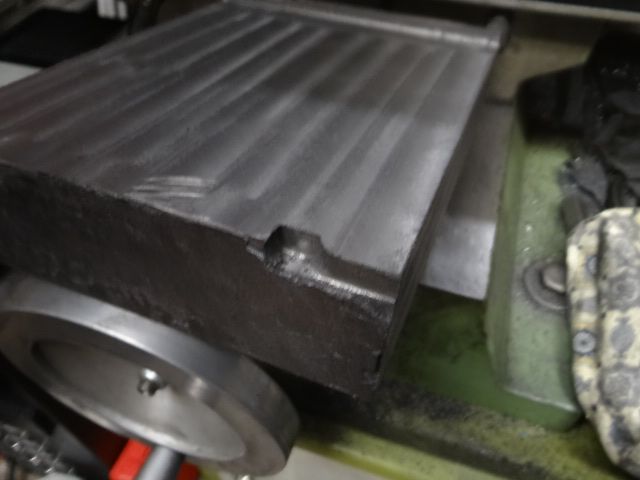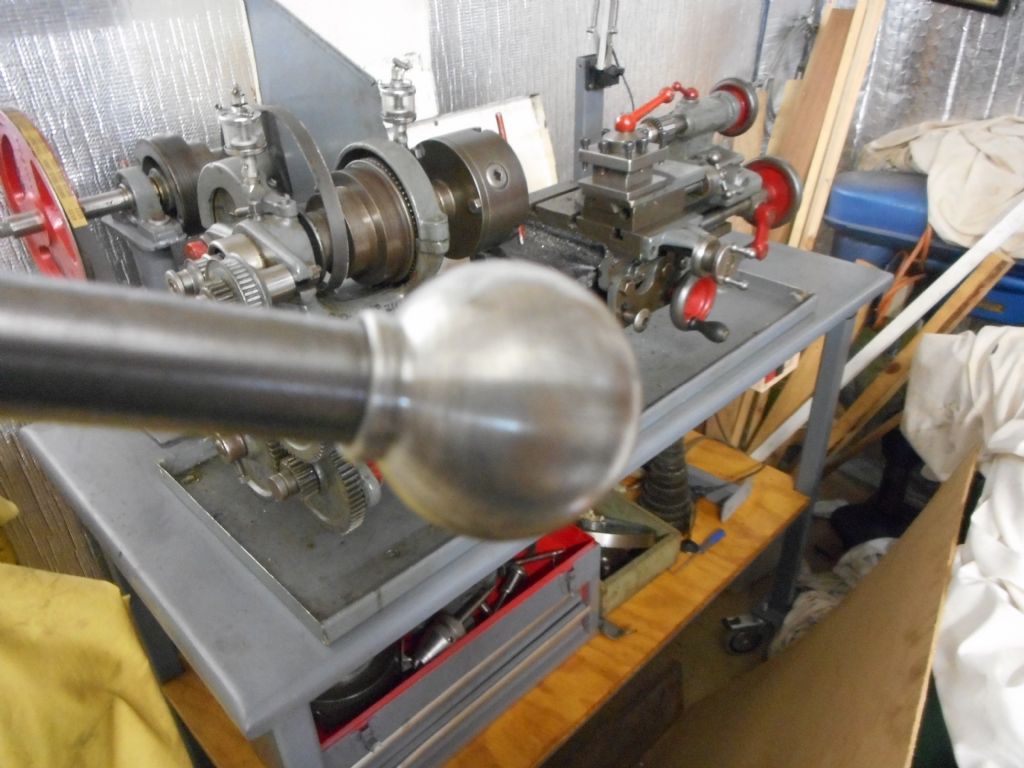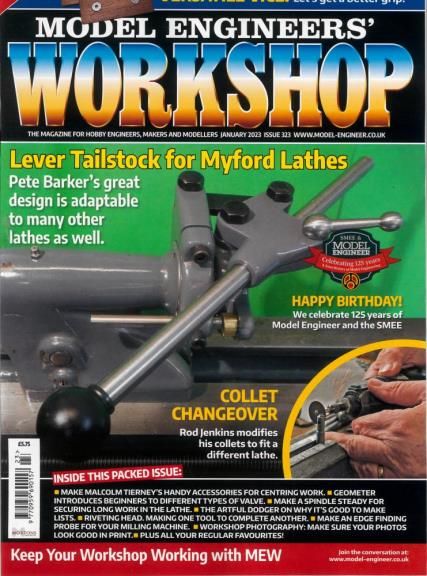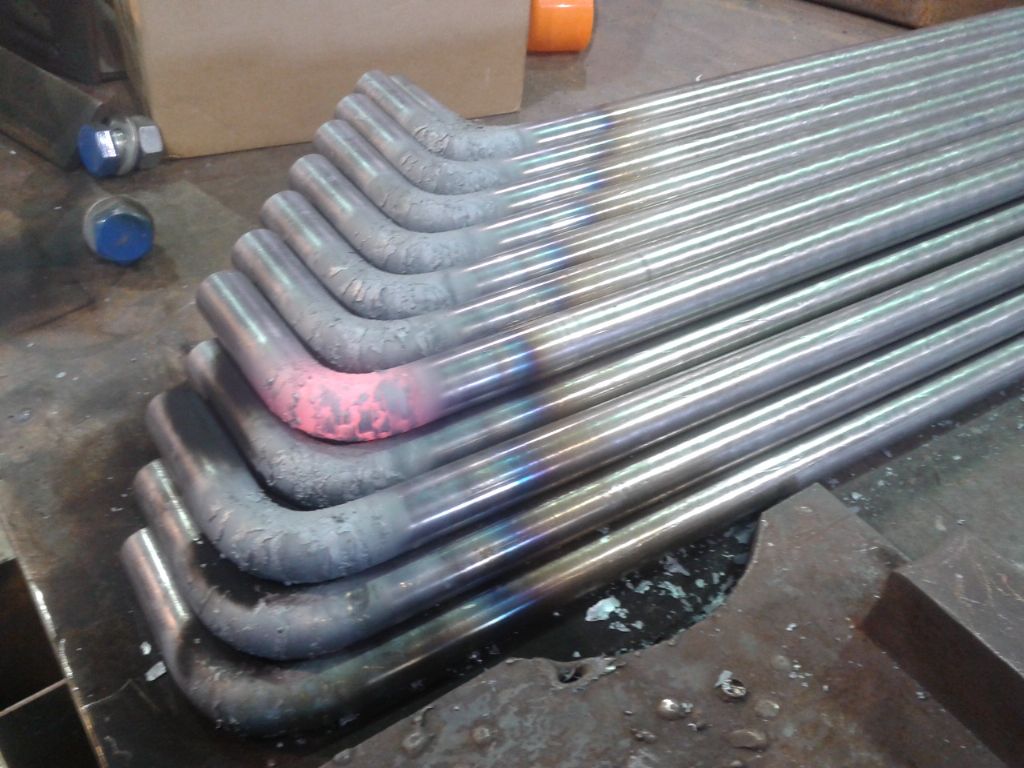No secret I'm not a master craftsman, but I hope it's obvious I want to learn! And I've no problem sharing blunders so that other self-taught beginners can make faster progress than I am.
"What's the clown done now?", I hear you asking!
Well, I'm squaring off a 140x160x35mm block of cast-iron for my Experimental Pendulum project using a WM18 milling machine. Having done most of the job successfully, I took a deep gouge out of the top surface, whilst tidying up the rear wall.

As common in accidents, this blunder resulted from a chain of causes. And, typically of me, the main driver was operator error rather than my Chinese mill, inexpensive cutters, or a slightly difficult material.
- all that's needed for the project is that the top of the block be machined flat. Though not strictly necessary, it was useful to machine the base as well, partly because a clean face makes it easier to clamp the block to the table and reference later cuts. This stage was completed successfully, then I made the first mistake: I decided to machine the block true and square on all sides "for practice". Rule 1: if it ain't bust don't fix it!
- However, yesterday afternoon, I got stuck in and successfully machined the two long sides correctly. Took quite a long time and revealed some problems I chose to tough-out: My mill is a little too low for my height, so I have to stoop slightly to twirl the lower controls. Not a problem normally, but I developed back-ache as the session proceeded; Silly Old Duffer isn't as fit as he used to be! Approaching the evening meal, I was tired, hungry and very thirsty. Rule 2: know when to stop!
- Nonetheless, having made good progress, and with 20 minutes in hand, I decided to carry on and finish the rear-face. Now I'm tired, hungry, thirsty, in pain and working against the clock. And it's very easy to make difficult situations worse. Rule 3: don't be rushed into making decisions or doing work unless it's genuinely urgent.
- Machining the rear face required the block to be upended, with a different clamp arrangement. On making a change, do not assume previous experience automatically applies. Rule 4. Think about it!
- My new clamp arrangement was solid right-left and down, less satisfactory front-back, and relied too much on the weight of the block to stop it lifting. I knew this, and went to get a G-clamp. Unfortunately my G-clamps couldn't easily be reached because I'd temporarily stored wood in front of the box. I allowed my tired muscles and hurting back to override good judgement. I decided, as I was only skimming the top that the block wouldn't lift. Rule 5: Brain knows best, don't ignore it!
- Making the first cut, I noticed starting was difficult and then suddenly got much easier, then harder with a mushy feel. I thought it odd, but carried on regardless. Bad mistake. At first the cutter broke through the hard outer skin, but then the hard edge caught in the helix and lifted the block off the table causing a deep gouge. Though the block weighs 6kg, and was restrained by two angled clamps, an 1100W motor is powerful enough to lift the job into the cutter and hack deep into the cast-iron. Wouldn't have gouged deep had I stopped, but I didn't react to the clues. Rule 6: when a cut suddenly sounds or feels different, make sure it's OK, and not an early warning of real trouble.
So I finished the day tired, hungry, thirsty, hurt, and knowing I'd made an entirely avoidable problem, spoiling a job that had otherwise gone well. Lots of opportunities missed to avoid the blunder. For instance, had I stopped for an early meal and recharged my batteries before finishing, I'd have fitted a G-clamps. The amount of work needed to reach them was insignificant, and I only wimped out because I was tired.
Let my shipwreck be your sea-mark!

That's my sad story. What mistakes have you learned from?

Dave
Edited By SillyOldDuffer on 09/03/2023 10:58:24
Hopper.








